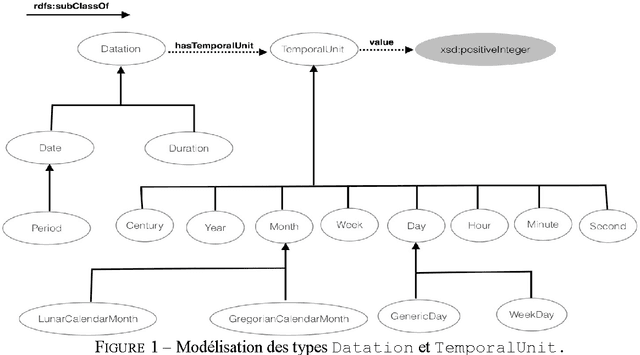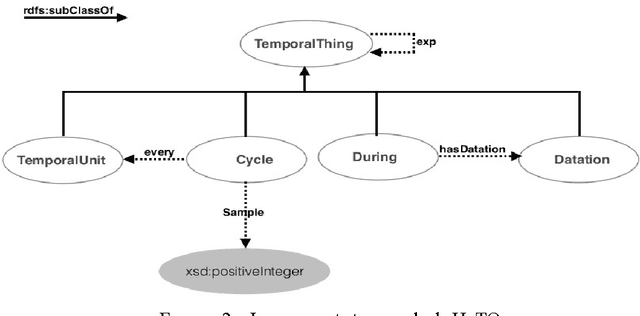Isabelle Mirbel
WIMMICS
Ontologies-based Architecture for Sociocultural Knowledge Co-Construction Systems
Apr 11, 2019


Abstract:Considering the evolution of the semantic wiki engine based platforms, two main approaches could be distinguished: Ontologies for Wikis (OfW) and Wikis for Ontologies (WfO). OfW vision requires existing ontologies to be imported. Most of them use the RDF-based (Resource Description Framework) systems in conjunction with the standard SQL (Structured Query Language) database to manage and query semantic data. But, relational database is not an ideal type of storage for semantic data. A more natural data model for SMW (Semantic MediaWiki) is RDF, a data format that organizes information in graphs rather than in fixed database tables. This paper presents an ontology based architecture, which aims to implement this idea. The architecture mainly includes three layered functional architectures: Web User Interface Layer, Semantic Layer and Persistence Layer.
HuTO: an Human Time Ontology for Semantic Web Applications
Jun 19, 2015

Abstract:The temporal phenomena have many facets that are studied by different communities. In Semantic Web, large heterogeneous data are handled and produced. These data often have informal, semi-formal or formal temporal information which must be interpreted by software agents. In this paper we present Human Time Ontology (HuTO) an RDFS ontology to annotate and represent temporal data. A major contribution of HuTO is the modeling of non-convex intervals giving the ability to write queries for this kind of interval. HuTO also incorporates normalization and reasoning rules to explicit certain information. HuTO also proposes an approach which associates a temporal dimension to the knowledge base content. This facilitates information retrieval by considering or not the temporal aspect.
From End-User's Requirements to Web Services Retrieval: A Semantic and Intention-Driven Approach
Apr 23, 2015

Abstract:In this paper, we present SATIS, a framework to derive Web Service specifications from end-user's requirements in order to opera-tionalise business processes in the context of a specific application domain. The aim of SATIS is to provide to neuroscientists, which are not familiar with computer science, a complete solution to easily find a set of Web Services to implement an image processing pipeline. More precisely, our framework offers the capability to capture high-level end-user's requirements in an iterative and incremental way and to turn them into queries to retrieve Web Services description. The whole framework relies on reusable and combinable elements which can be shared out by a community of users sharing some interest or problems for a given topic. In our approach, we adopt Web semantic languages and models as a unified framework to deal with end-user's requirements and Web Service descriptions in order to take advantage of their reasoning and traceability capabilities.
Challenges in Bridging Social Semantics and Formal Semantics on the Web
Aug 29, 2014Abstract:This paper describes several results of Wimmics, a research lab which names stands for: web-instrumented man-machine interactions, communities, and semantics. The approaches introduced here rely on graph-oriented knowledge representation, reasoning and operationalization to model and support actors, actions and interactions in web-based epistemic communities. The re-search results are applied to support and foster interactions in online communities and manage their resources.
 Add to Chrome
Add to Chrome Add to Firefox
Add to Firefox Add to Edge
Add to Edge